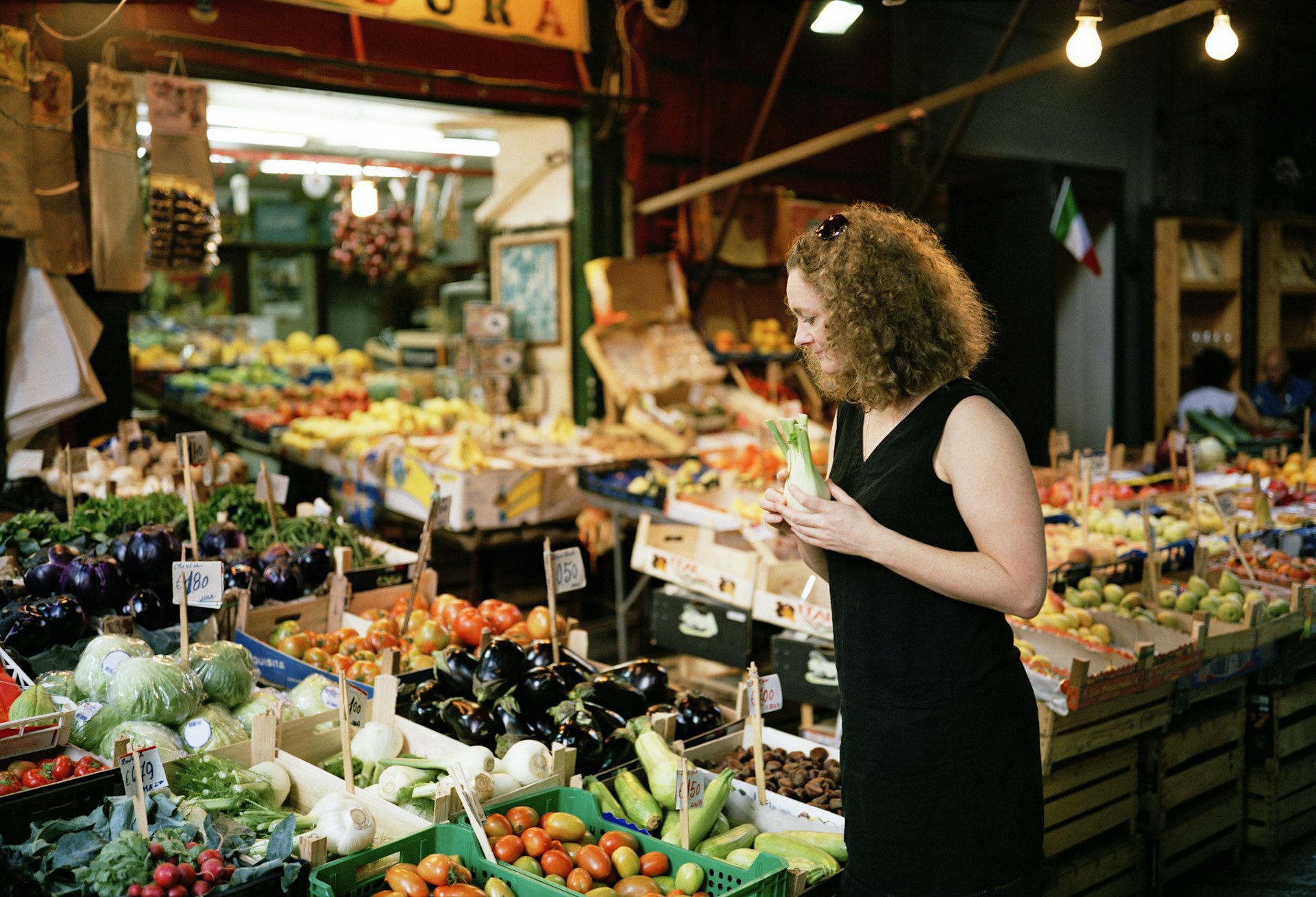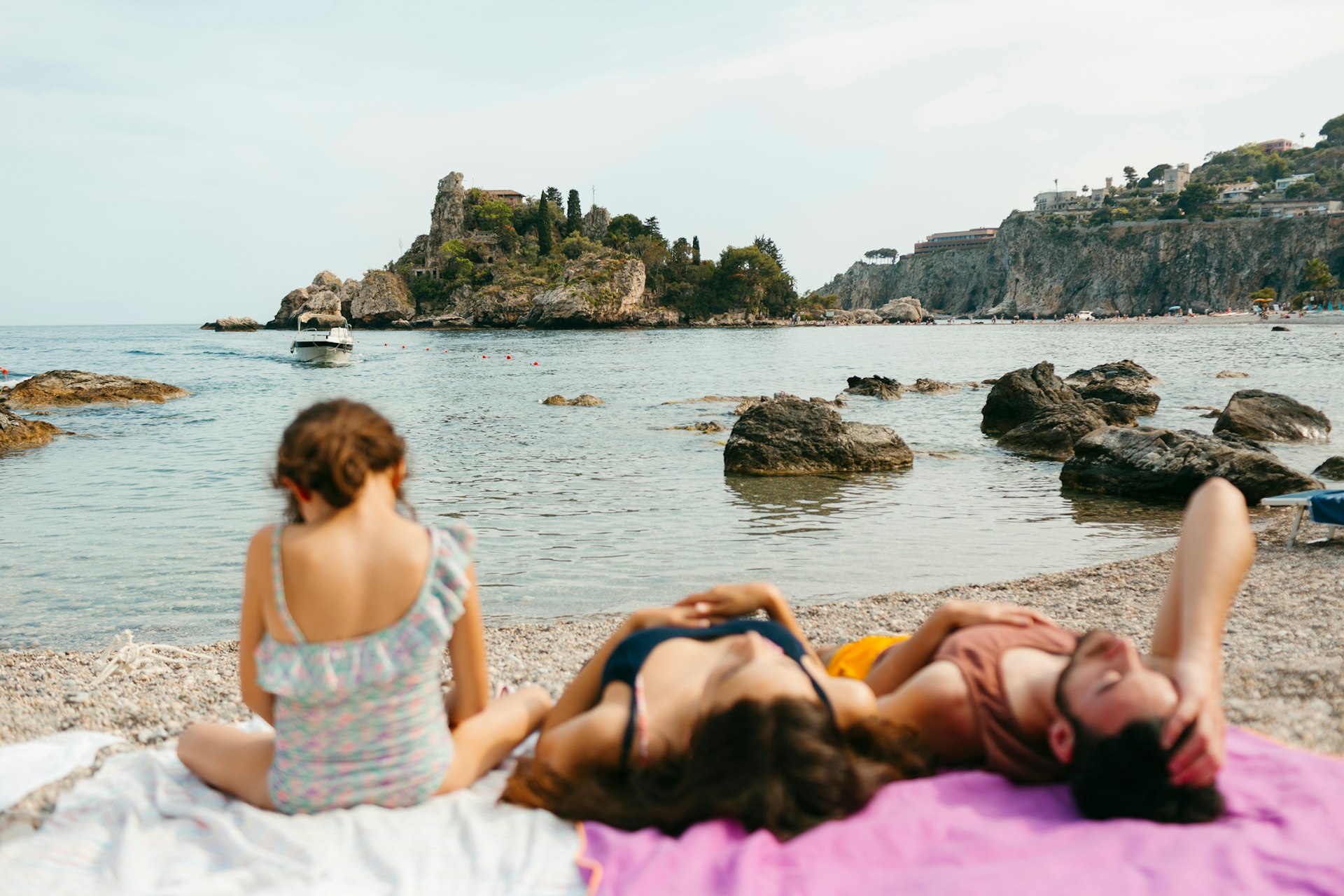Among Italians, Sicily is a prime summer destination, so when the mercury rises, so do airfares – but that doesn’t mean you can’t enjoy the Italian island life on a budget. While you can save on air travel by booking your trip in the off-season, it’s quite easy to plan a money-conscious itinerary year-round.
Unlike other more notoriously expensive destinations in Italy, like the Amalfi Coast or Lake Como, Sicily has the advantages of size and variety. It’s easy to find inexpensive meals, off-the-beaten-path accommodation, and even affordable public transportation to get around without racking up the bill at the gas pump. The low season, between November and April, is the cheapest time to visit Sicily, but with these budget travel tips, you can put together a thrifty itinerary at any time of year.
Daily costs in Sicily
Hostel room: €30-50
Basic room for two: €70-180
Self-catering apartment: €70-200
Public transportation from the airport: €2-7
Coffee: €1.5-3
Cannolo: €2-3.5
Margarita pizza: €6-10
Glass of wine: €3-5
Dinner for two: €20-60
Average daily cost: €115
Compare flight prices between Palermo and Catania airports
Outside of Europe, you will be hard-pressed to find direct flights to Sicily, so if you’re coming from further afield, most likely you will have to connect through a major Italian hub like Rome or Milan. Before you make your plans, though, it’s worth comparing the price difference in flights to Catania and Palermo. Either city is a fantastic starting point for a trip to Sicily, and the best way to experience a wide swath of the island is to arrive in one and depart from the other.
Off-season domestic flights start at around €30 to €35, and if you plan ahead, you can find flights in the high season (July and August) for around €70 to €100. Generally, flights to Catania tend to be cheaper, especially in the summer, since more of the best beaches in Sicily are found near Palermo.
Consider getting there by train
If you are incorporating a visit to Sicily within a larger tour of Italy, look into taking the train instead of flying. Not only is this a more sustainable option, but it’s a unique experience because in order to cross the Strait of Messina, which has been famously difficult to construct a bridge across, the train cars roll onto a ferry.
The lowest prices for an 11-hour Rome-to-Palermo journey start at around €38, but on average, you can expect to pay between €50 and €100 depending on how far in advance you book. Flying may sometimes be cheaper, but it’s worth comparing options before you book.
Take advantage of public transportation
Many places in Sicily, particularly the small interior villages and even remote beach towns, can be difficult to reach by public transportation – but not impossible. Rental cars and the cost of gas can be pricey, and you take the risk of running into the dreaded Limited Traffic Zone (ZTL) fines, so this is a great way to get around if you want to save money. Traveling along the main train lines is easiest, but it won’t get you everywhere. You can use websites like Rome2Rio and Omio to look up bus schedules, but often the best way to get the most accurate information is to go to the station and ask around.
Find budget accommodation outside major city centers
If you do rent a car, you can balance your budget by booking accommodation outside the major city centers. In small towns, you can find apartment rentals and hotels for as low as €40 per night, or get better value at an agriturismo resort for somewhere between €80 and €150.
You can also look into a monastery or convent stay, where rooms in religious institutions are rented out on the cheap, sometimes in very desirable locations. For example, in the dreamy beachside village of Cefalù, the Collegio di Maria di Cefalù offers modest sea-view rooms starting at €45 per night.

Enjoy the street food
There’s no shortage of good places to eat in Sicily, and some of the local specialties, like couscous or swordfish, are worth a splurge once in a while. However, if you want to save money, it’s beyond easy to fill up on affordable street food like arancini – fried rice balls.
In Palermo, you can find plenty of cheap eats at local markets like La Vucciria or the Mercato di Ballarò, the latter of which is also a good place to peruse the fruit and veggie stands or find tasty souvenirs to take home. In Catania, you can visit the fish market, or La Pescheria, which is surrounded by many good seafood restaurants and a few places that specialize in showcasing the classic street foods of the city.
Local tip: If you order the rice balls in Catania, make sure to ask for an arancina (feminine) instead of arancino (masculine) – Sicily’s two largest cities maintain a friendly rivalry over the pronunciation of this beloved snack.
Plan your trip around nature
You could spend your days in and out of Sicily’s many museums and archaeological parks, but those ticket costs will most certainly add up. Thankfully, many of Sicily’s natural attractions are free to enjoy, or at least accessible at the cost of a small entry fee if it is a protected reserve like Riserva Naturale dello Zingaro, where a seven-kilometer-long trail takes you along a stunning coastline with many swimming points. This route combines the best of Sicily’s hiking and beach attractions, but there are many more environmentally diverse areas to explore. The Riserva di Vendicari near Noto is flush with flamingos. Or visit the Bosco Della Ficuzza near Corleone, a forest that was once the favorite hunting grounds of King Ferdinand in the 18th century.

Bring your own beach kit
In most beach destinations, unless it is tough to access, you can safely expect to find a lido, or beach club, catering to the daily stream of sunbathers. In addition to selling food, they also rent out chairs and beach umbrellas, which are immaculately set up in rows each morning. Each lido has its territory on the beach, so bear in mind you won’t be at liberty to take the loungers with you. Typically, the lidos charge the same price for the whole day, so it’s a good value if you get there early, but not so much if you arrive without much daylight to spare.
You can save quite a bit of money if you carry your own towel and umbrella kit, even more so if you also think ahead and pack a picnic for lunch. For a single day, it might be too much to carry, especially for minimalism-minded travelers, but if you’ll be on the same beach for a few days, an umbrella is a worthy investment.
Local tip: Snorkelers should bear in mind that rental shops are few and far between, so if you want to make the most of the island’s crystal-clear waters, make sure to bring your own set of goggles.
